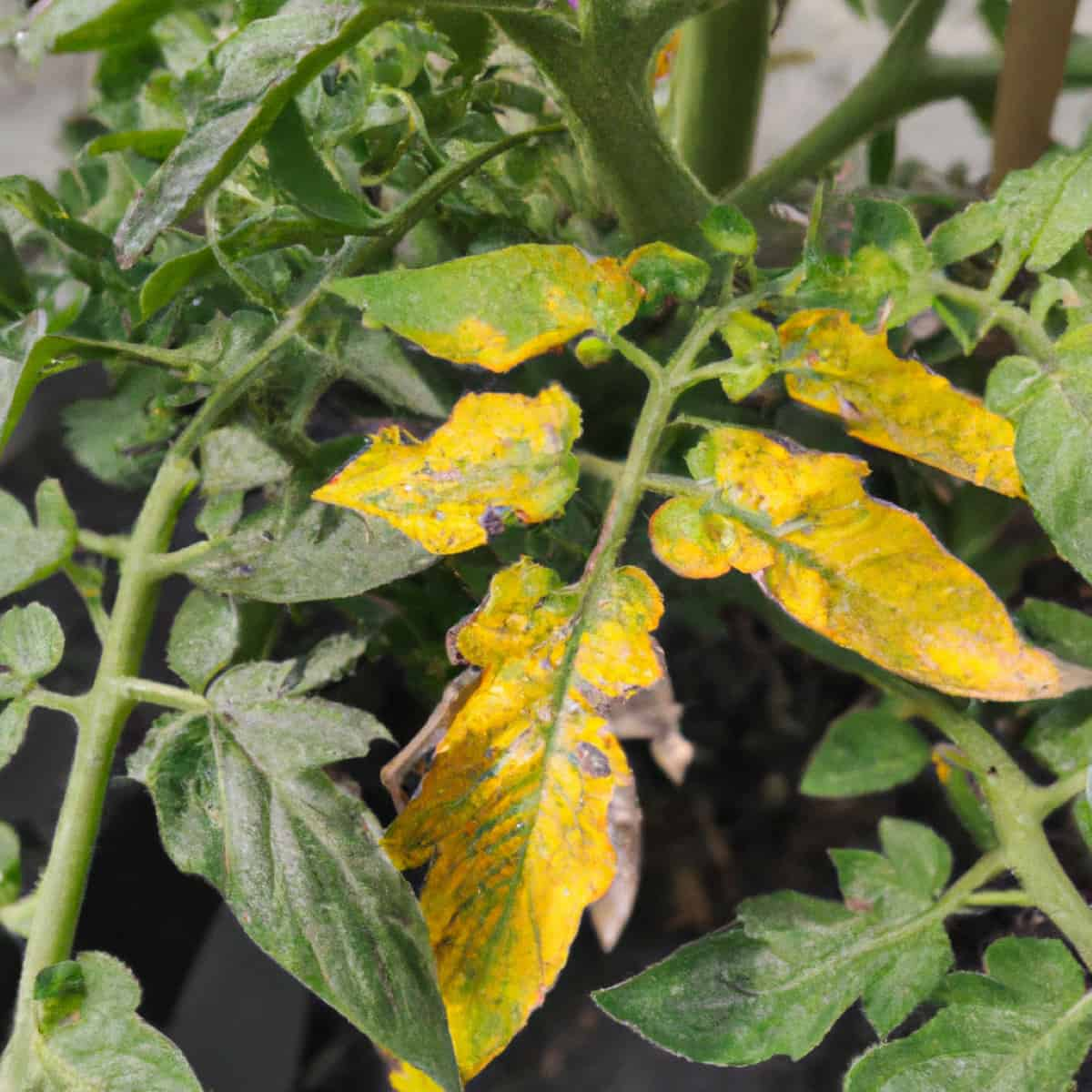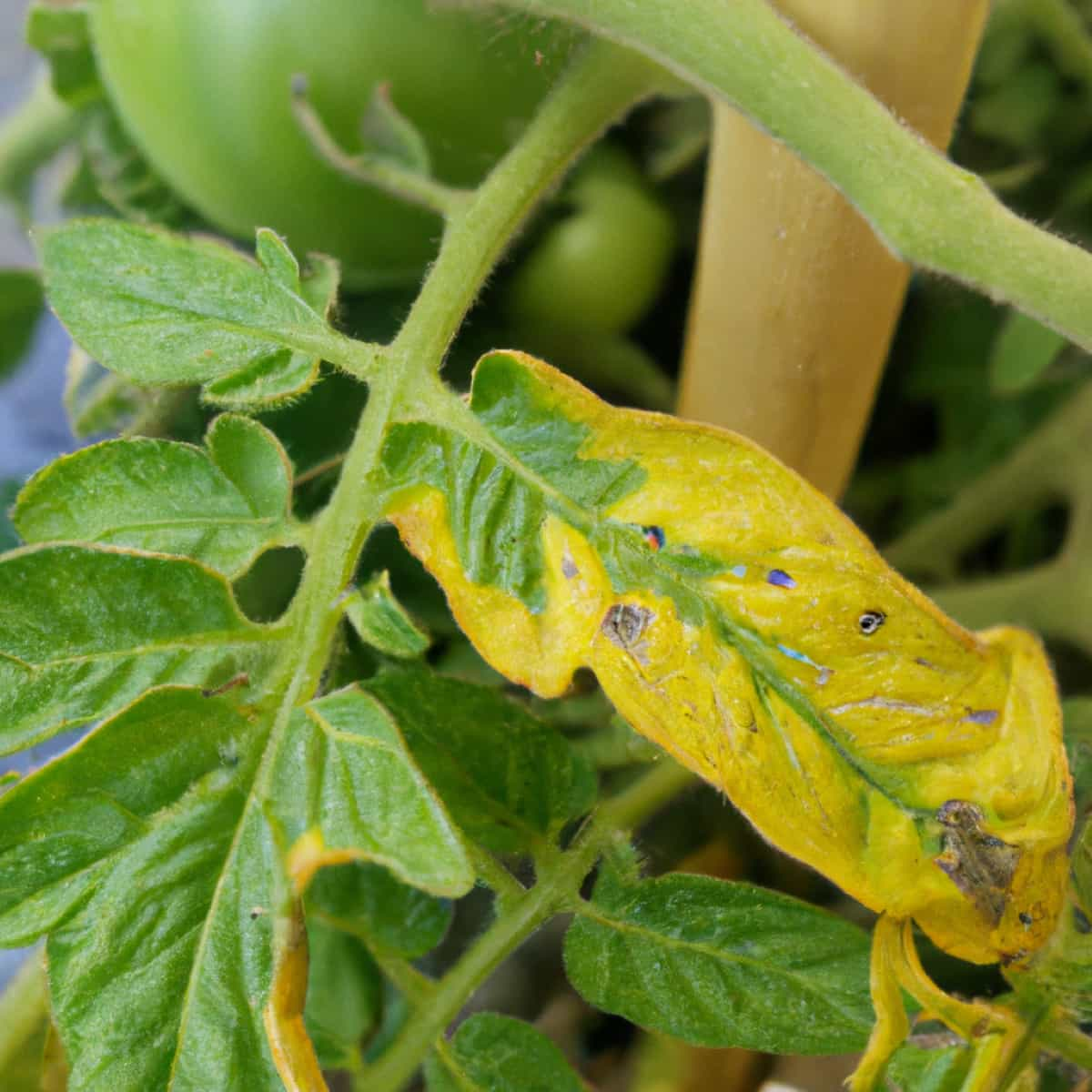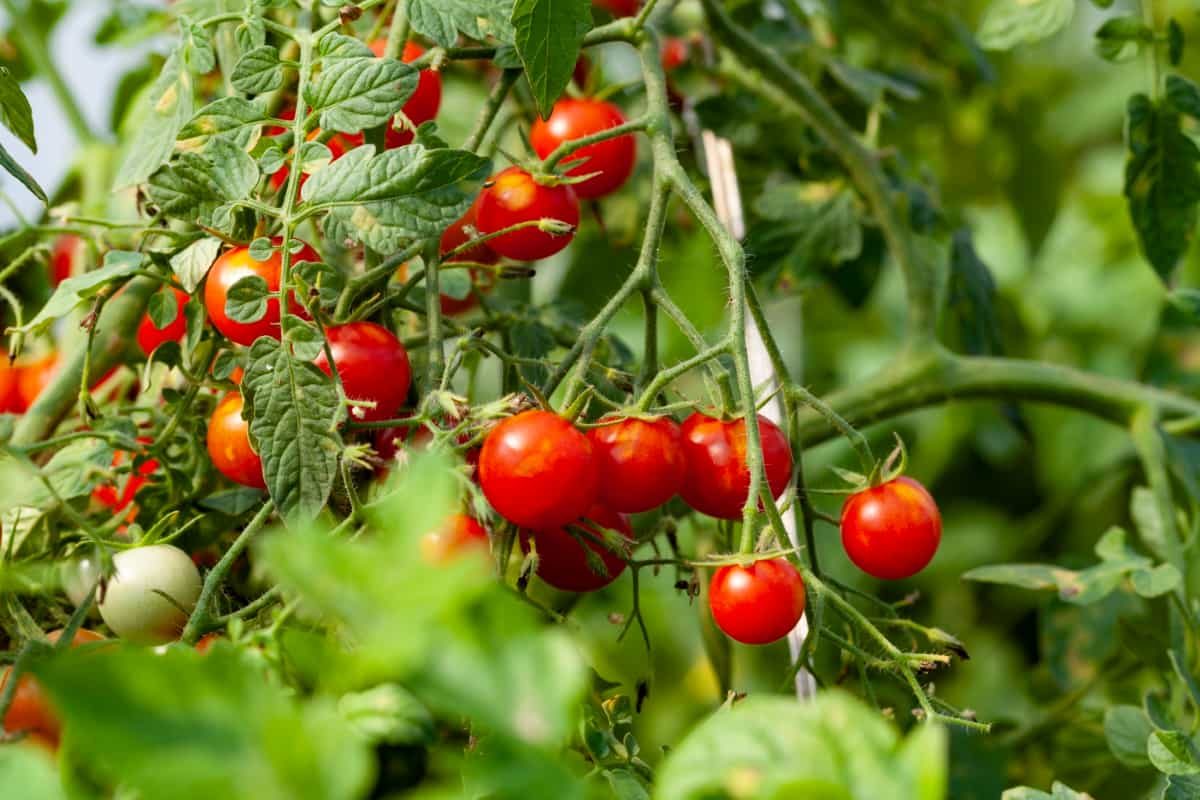Tomato Yellow Leaf Curl Virus (TYLCV) is a dangerous disease affecting worldwide tomato plants. The TYLCV-infected plants exhibit distinct symptoms, including leaf yellowing, upward leaf curling, stunted growth, and reduced fruit size and number. Understanding the virus’s transmission mode, symptoms, and disease cycle is crucial for effective prevention and management. This article explores ten natural remedies to combat TYLCV, enabling gardeners and farmers to restore the health of their tomato crops.

Understanding the TYLCV
The Tomato Yellow Leaf Curl Virus primarily transmits via the whitefly, an insect vector that infests the underside of leaves. When a whitefly feeds on an infected plant, it ingests the virus particles. These particles then relocate to the insect’s mouthparts and salivary glands, ready to be transferred to the next plant the whitefly feeds on. This virus can persist in the whitefly for its entire life, making it a potent carrier.
The symptoms of TYLCV usually appear one to three weeks post-infection. The first visible signs are leaf curling and yellowing, particularly in the younger, uppermost leaves. Gradually, these symptoms progress to the whole plant, resulting in stunted growth and decreased yield. In severe cases, TYLCV can cause total crop loss.
The disease cycle of TYLCV begins when a whitefly feeds on an infected plant, acquiring the virus. The insect then transmits the virus to healthy plants during subsequent feedings. Once inside a plant, the virus replicates, spreading throughout the plant tissues. This cycle continues as more whiteflies feed on the infected plants, rapidly spreading the disease.
Natural Remedies to Cure Tomato Yellow Leaf Curl Virus
Whitefly Control
The first and most essential step in managing TYLCV is controlling the whitefly population. To control the whitefly population, it is recommended to release natural predators such as ladybirds, lacewings, and spiders. Additionally, using yellow sticky traps can effectively capture adult whiteflies, reducing their numbers.
Neem Oil
Spraying neem oil on tomato plants can deter whiteflies, disrupting their feeding, growth, and reproduction. Moreover, it can suffocate the insects on contact. Neem oil is safe for beneficial insects, making it an ideal choice for integrated pest management.
Insecticidal Soap
Insecticidal soaps, made from potassium fatty acids, are safe and effective against soft-bodied insects like whiteflies. They work by penetrating the insect’s outer layer, causing dehydration and death. Regular application of insecticidal soap can significantly reduce whitefly populations, thereby controlling the spread of TYLCV.
Garlic Spray
Garlic possesses insecticidal properties, and a homemade garlic spray can be useful against whiteflies. A powerful spray can be made by crushing a few cloves of garlic and mixing them with water. Regularly spraying this on your tomato plants can help deter whiteflies and reduce the transmission of TYLCV.
Companion Planting
Companion planting involves growing certain plants together for mutual benefit. Marigolds, for example, are known to repel whiteflies and other pests. Intercropping marigolds with tomatoes can help create a less favorable environment for whiteflies, reducing the risk of TYLCV.
Crop Rotation
Crop rotation is an effective agricultural method to disrupt the disease cycle and reduce the buildup of whiteflies and TYLCV in the soil. Don’t reuse garden soil to avoid spreading the virus that causes tomato and other plant diseases.
In case you missed it: Best Organic Tomato Fertilizers: For Better Yield and Taste

Resistant Varieties
Many tomato varieties have been bred to be resistant to TYLCV. These varieties carry specific genes that allow them to withstand the virus, reducing the impact of the disease. Planting resistant varieties can effectively manage TYLCV, particularly in regions where the virus is prevalent.
Healthy Soil
Healthy soil is the backbone of a strong, disease-resistant plant. Incorporating organic matter into the soil can improve its structure, nutrient content, and water-holding capacity. This promotes robust plant growth, making the plants less susceptible to TYLCV infection. Regular use of compost and organic fertilizers can help maintain soil health.
Use of Biopesticides
Biopesticides derived from naturally occurring substances, like certain bacteria, fungi, and viruses, can effectively control whiteflies. For example, Beauveria bassiana, a fungus, infects and kills whiteflies, thereby preventing the spread of TYLCV. Regular application of biopesticides can be a sustainable strategy for managing TYLCV.
Regular Monitoring
Regular monitoring is crucial to detect the first signs of TYLCV infection. Early detection can prevent the widespread of the virus and make management efforts more effective. Regularly inspect your tomato plants, especially the underside of the leaves, for the presence of whiteflies and the characteristic yellowing and curling associated with TYLCV.
Prevention and Control
Prevention is always better than cure. Besides the natural remedies mentioned, preventive measures include regularly removing plant debris, which can harbor whiteflies and the virus. Maintaining a clean garden environment is also essential, as clutter can provide hiding spots for whiteflies.
Moreover, using reflective mulches can deter whiteflies by reflecting sunlight, making locating their host plants difficult. This method can be particularly effective when combined with other control strategies.
Furthermore, regular watering and fertilizing can help maintain plant health, making them more resilient to TYLCV infection. Overcrowding of plants should be avoided as it can facilitate the spread of whiteflies and the virus.
Biological Control
Biological control refers to using living organisms, such as beneficial insects, birds, and microorganisms, to control pests and diseases. In the case of whiteflies, natural enemies include parasitic wasps, lacewings, ladybugs, and predatory mites. Parasitic wasps, for example, lay their eggs inside the whiteflies. As the wasp larvae grow, they kill the whitefly, reducing their population and spreading TYLCV.
In case you missed it: Hydroponic Tomato Farming in a Greenhouse: Key Rules to Start from Scratch

Furthermore, certain microorganisms, like the fungus Lecanicillium lecanii and the bacteria Bacillus thuringiensis (Bt), are known to infect and kill whiteflies. The application of these biocontrol agents can further aid in whitefly management. Biological control strategies are best used in an integrated pest management approach, combined with the abovementioned techniques.
Conclusion
TYLCV poses a significant threat to tomato production worldwide. However, it is possible to manage this disease effectively through a combination of natural remedies and preventive measures. By understanding the virus’s mode of transmission, symptoms, and disease cycle, gardeners and farmers can better equip themselves to tackle this challenge. The key lies in early detection, sustainable practices, and integrated pest management strategies. With these tools, we can ensure a healthy and fruitful tomato harvest.
- Feed Your Flock for Less: Top 10 Tips to Save on Chicken Feed
- Ultimate Guide to Ossabaw Island Hog: Breeding, Raising, Diet, and Care
- Hatching Answers: The Top 10 Reasons Your Chickens Aren’t Laying Eggs
- Eggs and Economics: Breaking Down the Cost of Raising Backyard Chickens
- Defend Your Greens: Proven Methods to Keep Iguanas Out of Your Garden
- Ultimate Guide to Cinnamon Queen Chicken: A Comprehensive Guide for Beginners
- Ultimate Guide to California Tan Chicken: Breeding, Raising, Diet, Egg-Production and Care
- Ultimate Guide to Marsh Daisy Chicken: Breeding, Raising, Diet, and Care
- 10 Types of Chicken Farming Businesses You Can Start for Profits